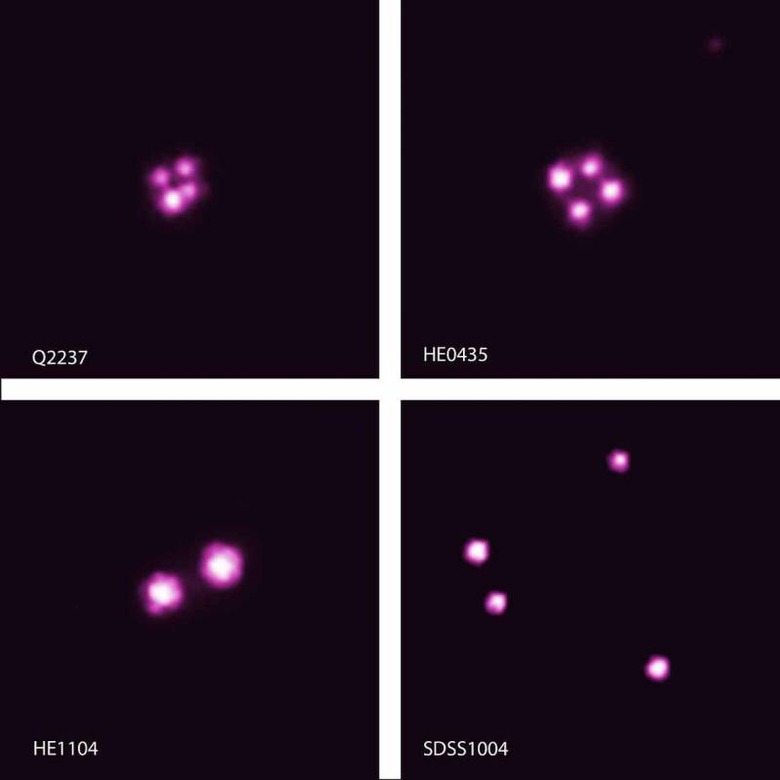Scientists Use A New Technique To Measure The Spin Of Five Supermassive Black Holes
Scientists have used data from the Chandra X-ray observatory and a chance alignment to use a new technique to measure the spin of five supermassive black holes. The team has found that the matter swirling around one of the black holes is doing so at about 70% of the speed of light. The team took advantage of a natural phenomenon called a gravitational lens.The scientists say that with a just-right alignment the bending of space-time by a massive object, like a large galaxy, can magnify and produce multiple images of a distant object. This is something that was predicted by Einstein. The team used Chandra data and gravitational lensing to study six quasars that each had a supermassive black hole rapidly consuming matter from a surrounding accretion disk.
Gravitational lensing of light from each of the quasars by an intervening galaxy created multiple images of four of these quasars as shown by these Chandra images of the four targets. The key advance that the team made in this case was to take advantage of microlensing where individual stars in the intervening, lensing galaxy provided additional magnification of the light from the quasar.

The higher magnification means a smaller region is producing the X-ray emissions. The team then used the property that a spinning black hole is dragging space around it with it and allows matter to orbit closer to the black hole than is possible with a non-spinning black hole.
The team says that a smaller emitting region corresponding to a tight orbit implies a more rapidly spinning black hole. The conclusion from the team through its microlensing analysis is that when X-rays come from such a small region, the black holes must be spinning rapidly. Testing showed that one of the black holes in a quasar dubbed the "Einstein Cross" was spinning at or almost at the maximum rate possible, about 670 million miles per hour.
